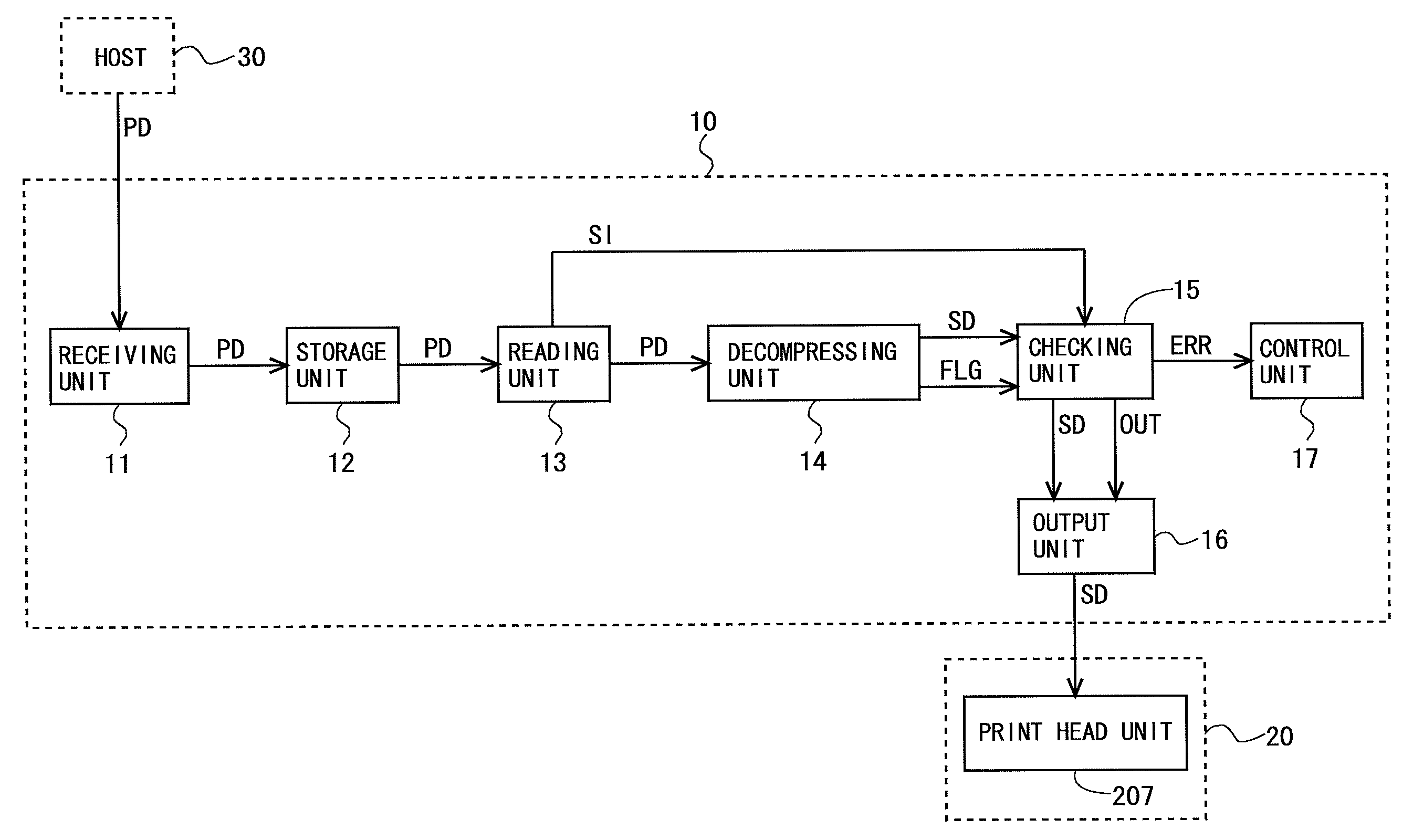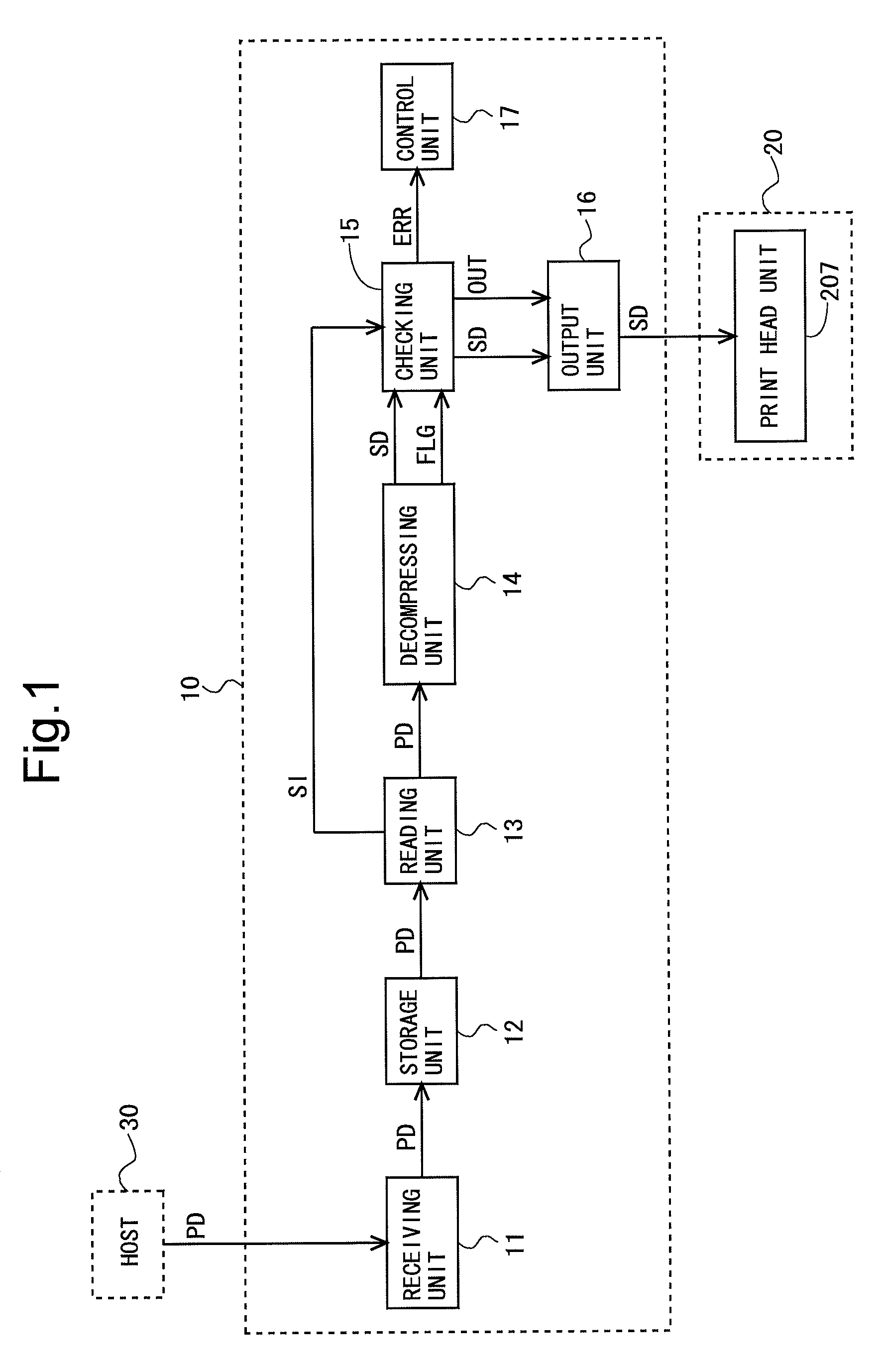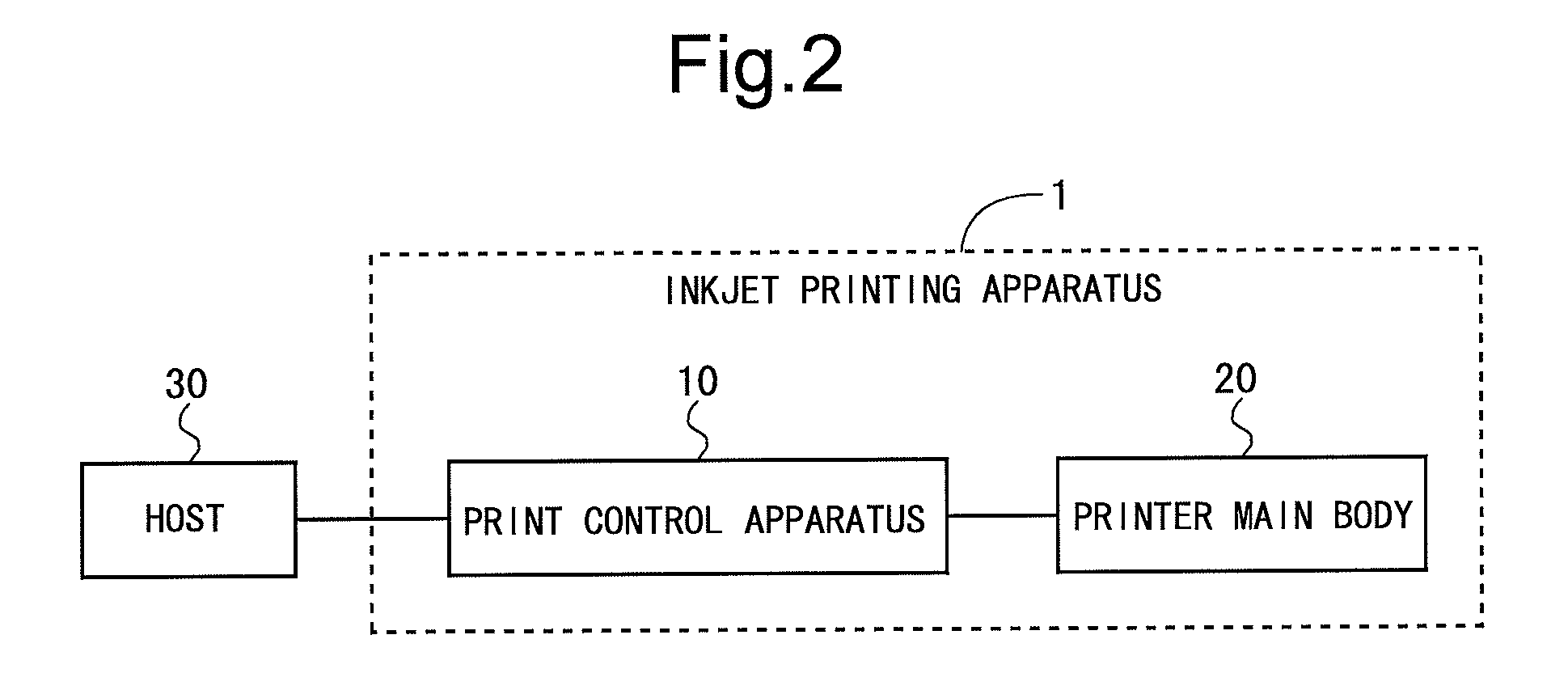Print control apparatus, inkjet printing apparatus, print control method, and recording medium with data compression/decompression
a printing control and inkjet printing technology, applied in the direction of digital output to print units, instruments, visual presentation using printers, etc., can solve the problems of memory failure, inability to perform decompression of data correctly, and the printing apparatus cannot perform printing at the original printing speed, so as to achieve the effect of not reducing the printing speed of the printing apparatus
- Summary
- Abstract
- Description
- Claims
- Application Information
AI Technical Summary
Benefits of technology
Problems solved by technology
Method used
Image
Examples
Embodiment Construction
[0070]An embodiment of the present invention will be described below with reference to the accompanying drawings.
[0071]
[0072]FIG. 2 is a block diagram showing a configuration of an entire printing system according to an embodiment of the present invention. The printing system is configured by an inkjet printing apparatus 1 and a host 30. The inkjet printing apparatus 1 is configured by a printer main body 20 and a print control apparatus 10 which is a control apparatus for the printer main body 20. In the printing system, the host 30 functions as a transfer apparatus that transfers compressed data to be printed (hereinafter, referred to simply as “compressed data”) to the print control apparatus 10. More specifically, the host 30 converts data to be printed from a vector format to a raster format by a RIP (Raster Image Processor), and performs run-length compression, e.g., a PackBits scheme, on the converted data, thereby obtaining compressed data. Then, the host 30 transfers the co...
PUM
 Login to View More
Login to View More Abstract
Description
Claims
Application Information
 Login to View More
Login to View More - R&D
- Intellectual Property
- Life Sciences
- Materials
- Tech Scout
- Unparalleled Data Quality
- Higher Quality Content
- 60% Fewer Hallucinations
Browse by: Latest US Patents, China's latest patents, Technical Efficacy Thesaurus, Application Domain, Technology Topic, Popular Technical Reports.
© 2025 PatSnap. All rights reserved.Legal|Privacy policy|Modern Slavery Act Transparency Statement|Sitemap|About US| Contact US: help@patsnap.com



